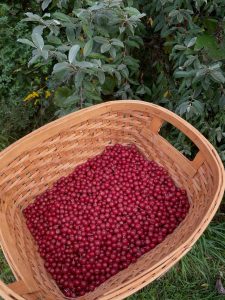Chicory (Cichorium intybus) is a perennial herb plant. It can easily be recognized from its bright blue flowers and its dandelion-like leaves. Chicory is native to Europe, but it’s now commonly found across the US and Canada. All parts of the Chicory plant are edible. The leaves can be eaten raw or cooked and the flowers can be used as an edible salad garnish. Even the stems and roots can be used to make tea. However, Chicory tastes very bitter and it may help to blanch the root in water before consumption to help remove the bitter taste. To read more about the Chicory plant, see our article Chicory, Street Side Salad Greens and Tea.
Health Benefits
Chicory leaf or root tea is loaded with vitamins and minerals. It contains dietary fiber, vitamin A, B, C, E, K, and multiple minerals. It can be a great alternative to sugary or carbonated drinks. Without further ado, let’s move on to our Chicory tea recipe.
Ingredients (Makes 1 Cup)
2 tablespoons ground or chopped Chicory root
1 cup water
1 cinnamon stick (whole, not powdered)
1 tablespoon coconut oil
1 tablespoon honey or sweetener of your choice (optional)
Directions
Boil the water in a sauce pan.
In a tea kettle, put in Chicory root and the cinnamon stick. Pour the boiling water into the tea kettle. Cover the kettle and let the tea steep for 3 to 5 minutes.
Remove the cinnamon stick, then pour the tea into a blender along with the coconut oil. Blend the tea and oil on high for 15 to 30 seconds. Alternatively you can just strain out the chunks of root with a cheese cloth.
Pour the tea into a cup. Add in honey or other sweeteners of your choice, if you wish. Serve and enjoy while warm.
Many of our readers find that subscribing to Eat The Planet is the best way to make sure they don't miss any of our valuable information about wild edibles.
See our privacy policy for more information about ads on this site






